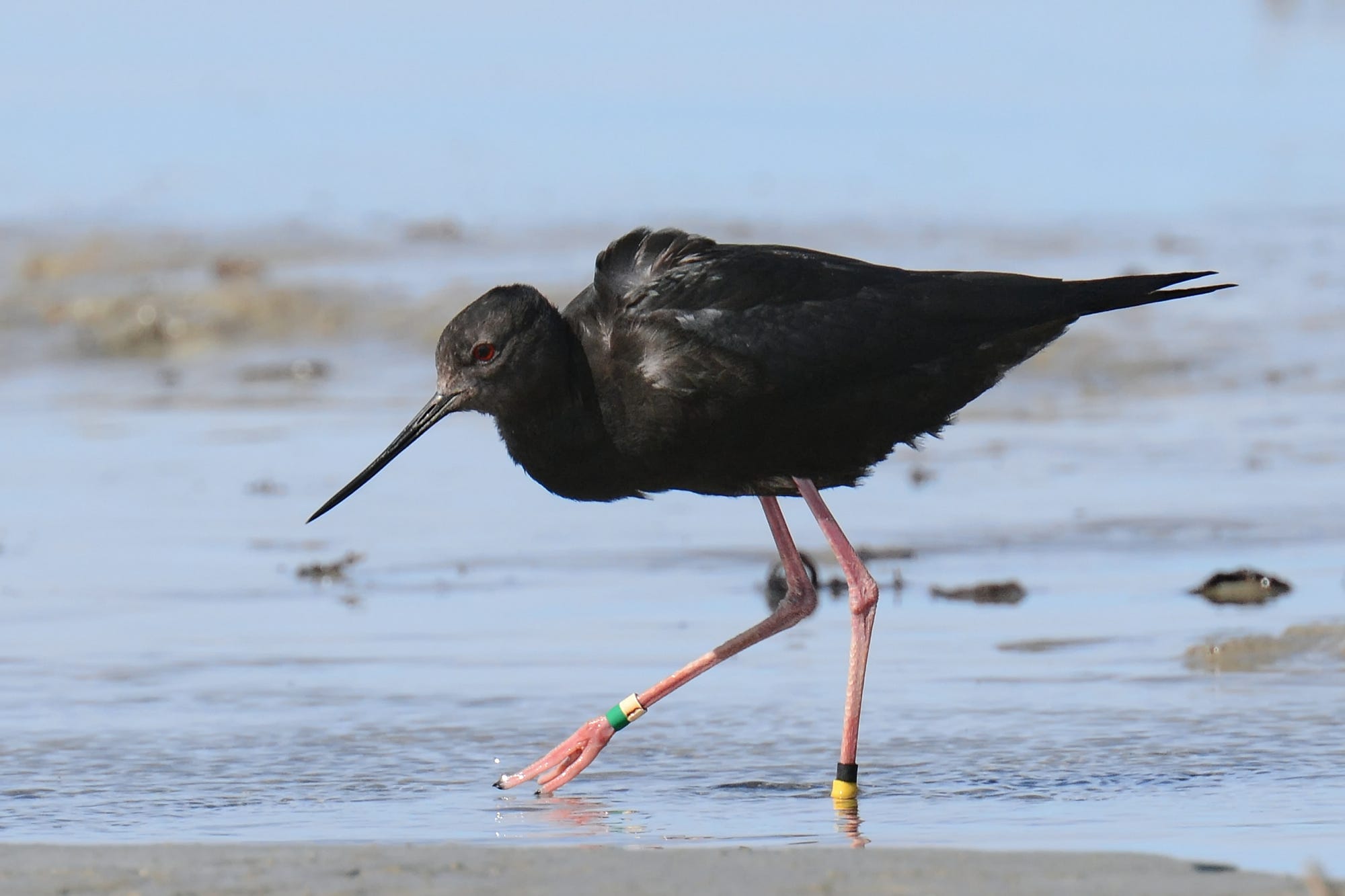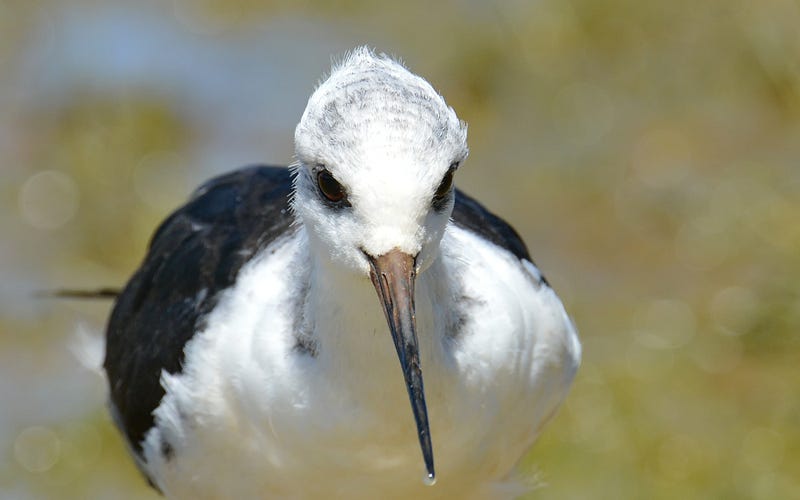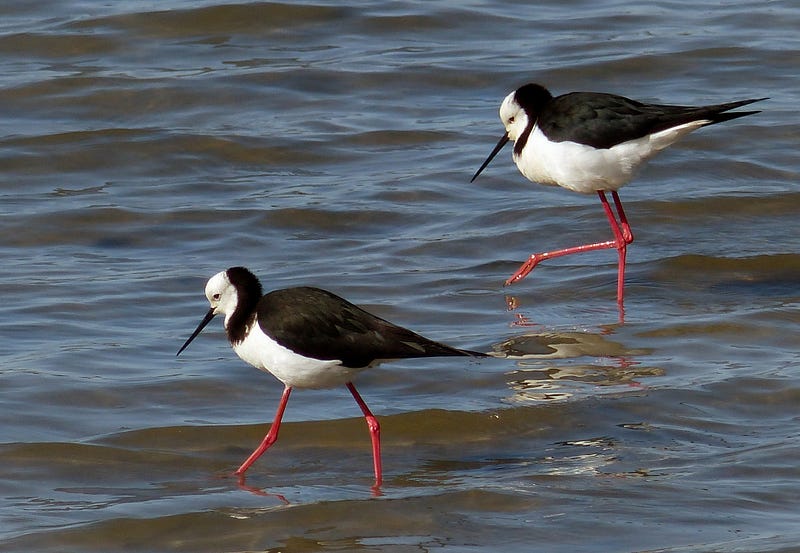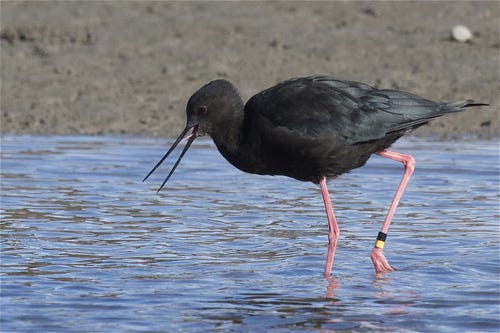
When you reach the level of Critically Endangered, a species has undergone such extreme declines that extraordinary measures are often required in order to prevent its extinction. These are the rarest of the rare. Today, we’ll be talking about a Critically Endangered shorebird. There are approximately 210 species of true shorebirds, which include sandpipers, plovers, and oystercatchers among others. The species considered the rarest of these is the black stilt, Himantopus novaezelandiae.
This bird is found only in New Zealand (it is called the kaki by the native Maori people) and, despite recent increases, its total population remains vanishingly small, only 38–50 mature individuals plus some juveniles and non-breeding adults. Because they are not declining, the black stilt qualifies under the fourth criterion for Critically Endangered I mentioned in the introduction to Season 3.

The black stilt is often found in rivers and wetlands, feeding on insects, molluscs, and occasionally small fish. They reach maturity in two years, though some individuals do not breed until three years of age. They were previously known to inhabit broad areas of both the north and south islands of New Zealand, but much of their prior habitat is now occupied by their more common relative the pied stilt, Himantopus himantopus, seen below.

While habitat degradation, caused mainly by hydroelectric development and flood control measures, has contributed to the decline of the stilt, the main reason for its precipitous drop in population size is due to introduced predators. This is another common factor for Threatened Species, especially those native to islands like New Zealand (such problems have been observed for a variety of species on the Hawaiian and Galápagos islands as well, for example). Because islands are isolated, colonizing by new species is more difficult and predators, especially mammalian predators, are rare.
The problem in New Zealand began with the introduction of rabbits for food and sport in the 19th century. The term ‘breeding like rabbits’ is an apt one, as rabbits do not have a menstrual cycle or a time of the year that they are ‘in heat’. In fact, the act of intercourse itself is what induces ovulation. Rabbits mature in 3 to 8 months and have between 4 and 12 offspring per litter after a one month gestation. With no native predators, the rabbits spread like wildfire and quickly became pests.
The negative impact for the stilts came when the New Zealanders introduced more animals in an attempt to exterminate the rabbits. These included cats, ferrets, and weasels. However, the introduced predators did not eat as many rabbits as expected and instead targeted native birds like the black stilt. The stilt was especially vulnerable for a variety of reasons. Firstly, it nests in late winter when the rabbit populations are at their lowest and the predators are seeking other food sources. Furthermore, they are more likely to nest in solitary pairs, eliminating the protection provided by nesting in a colony. They also are less likely than other shorebirds to initiate distraction displays, such as the broken-wing distraction where an adult pretends it is injured to lure a predator away from its nest. Their young also take longer to fledge, so the risks to both eggs and hatchlings is increased.

After the initial large-scale decline, other unusual factors have dampened its recovery. This includes hybrid breeding with the closely related pied stilt. While a black stilt will choose a partner with the darkest plumage, the overall lack of potential mates caused ‘black x pied’ stilt pair bonds to occur. This is even more problematic because the black stilt is one of a few species that pair bond for life (true sexual monogamy is rare in nature, though social monogamy is slightly more common). This means that the black stilt in a hybrid pair is no longer available for the breeding population of its own species.
Efforts to save the black stilt have been ongoing for 35 years, starting with predator exclusion fencing near nesting sites and extensive predator trapping. There is also a captive breeding program whose release methods have improved over the years. Initial survival rates of released individuals have increased from 20–45% to 80–100%. There are also efforts at habitat restoration and controlling the population of hybrids so as to not dilute the gene pool of the species (only 5 hybrid individuals are currently known). These efforts have undoubtedly kept this species from becoming Extinct in the Wild, but it is still balanced on the edge.
We’ll look at another Critically Endangered species next week, and then move on to some species that didn’t make it and are now gone.